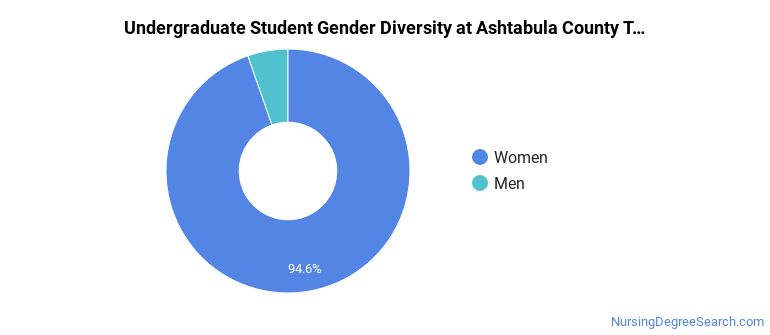Ashtabula County Technical and Career Campus Nursing Programs
Located in Jefferson, Ohio, Ashtabula County Technical and Career Campus is a public institution. The rural area surrounding the school is great for students who prefer living in a country setting.
Where Is Ashtabula County Technical and Career Campus?

Contact details for Ashtabula County Technical and Career Campus are given below.
| Contact Details | |
|---|---|
| Address: | 1565 State Route 167, Jefferson, OH 44047 |
| Phone: | 440-576-6015 |
| Website: | www.atech.edu |
Can I Afford Ashtabula County Technical and Career Campus?
Student Loan Debt
It's not uncommon for college students to take out loans to pay for school. In fact, almost 66% of students nationwide depend at least partially on loans. At Ashtabula County Technical and Career Campus, approximately 67% of students took out student loans averaging $6,510 a year. That adds up to $26,040 over four years for those students.
Ashtabula County Technical and Career Campus Undergraduate Student Diversity

Gender Diversity
Of the 56 full-time undergraduates at Ashtabula County Technical and Career Campus, 5% are male and 95% are female.

Racial-Ethnic Diversity
The racial-ethnic breakdown of Ashtabula County Technical and Career Campus students is as follows.

| Race/Ethnicity | Number of Grads |
|---|---|
| Asian | 0 |
| Black or African American | 0 |
| Hispanic or Latino | 0 |
| White | 54 |
| International Students | 0 |
| Other Races/Ethnicities | 2 |
Ashtabula County Technical and Career Campus Nursing Concentrations
The table below shows the number of awards for each concentration.
| Major | Basic Certificate | Undergraduate Certificate | TOTAL |
|---|---|---|---|
| Licensed Practical/Vocational Nurse Training | 0 | 23 | 23 |
| Other Practical Nursing, Vocational Nursing and Nursing Assistants | 18 | 0 | 18 |
| Registered Nursing | 0 | 7 | 7 |
| TOTAL | 18 | 30 | 48 |
References
*The racial-ethnic minorities count is calculated by taking the total number of students and subtracting white students, international students, and students whose race/ethnicity was unknown. This number is then divided by the total number of students at the school to obtain the racial-ethnic minorities percentage.
More about our data sources and methodologies.
